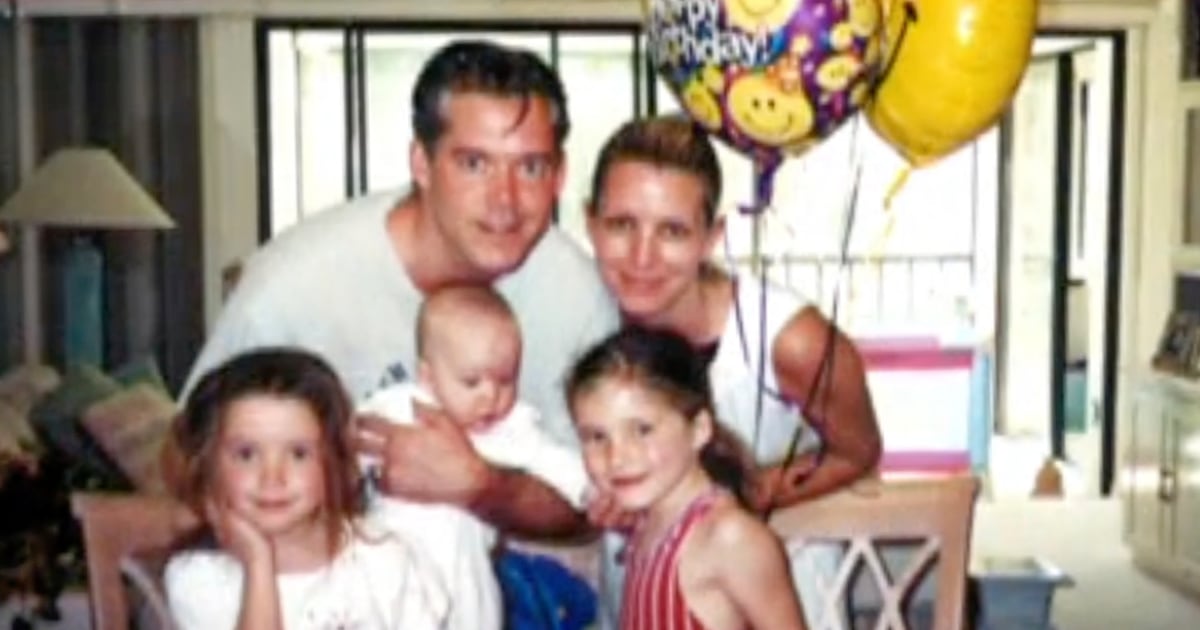Blood
My husband, NBC’s David Bloom, died of a blood clot 20 years ago. I’ve found purpose in grief
On April 6, 2003, NBC’s David Bloom, 39, was in Iraq covering the war when he died suddenly of a deep vein thrombosis (DVT) complication. A clot that formed in his legs moved to his lungs, leading to a fatal pulmonary embolism. Since then, his widow, Melanie Bloom, has been raising awareness about DVT and the importance of knowing your risk for blood clots. She reflects to TODAY.com on grappling with grief and fostering a lasting legacy.
I had been living in fear about the dangers of David’s assignment embedded with the U.S. Army’s 3rd Infantry Division in Iraq. When they called and told me he died, I was stunned. Even though he had taken so many precautions to protect himself, including wearing chemical suits, gas masks, steel reinforced boots and a flak jacket, nothing was foolproof against the war raging around him.
Yet, none of that gear could have protected him from what I refer to as the bomb that lay within his own body — a blood clot he wasn’t aware of and couldn’t shield himself from.
At the time, I was vaguely familiar with blood clots, but I had never heard of deep vein thrombosis or pulmonary embolisms. Soon after, I started educating myself, trying to understand what took my husband’s life. I learned that when a blood clot forms in the legs, it’s called deep vein thrombosis.
DVT occurs when blood flow in your veins slows down. In David’s case, it was likely caused by being sedentary for long periods of time while traveling for days on end, severe dehydration and sleeping inside military tanks with his knees pulled tightly to his chest for hours.
Just a few days before he died, he called me and told me he was sleeping on tank’s fender because he had leg cramps. I panicked. Certainly, he would be safer inside the tank. But he just couldn’t sleep with the shooting pains in his legs. Neither of us realized at the time that these cramps could have been an early sign of deep vein thrombosis.
When a blood clot from the legs breaks free and move toward the lungs, it can become a pulmonary embolism. In David’s case, the clot blocked an artery in his lung, proving fatal.
Our twin daughters, Christine and Nicole, were just 9, and their younger sister, Ava, was only 3 years old when David died. This made his death heartbreaking on a whole different level. Having to tell them they would never see their father again was the hardest thing I have ever done. I worked hard to keep his memory alive and help them cherish and love the time that we shared with him. I encourage them to live their lives as David would have wanted them to — by seeking joy, being strong and living life to its fullest.
Still, I grapple with grief. As time passes, it becomes easier in some ways. Yet there’s no real closure and you learn to live beside your grief. I’ve found that I need to honor it. There’s no quick fix, and I must walk through it and feel it. Speaking about David and raising awareness about deep vein thrombosis helps assuage some of sadness I experienced.
Following his death, we learned that David had factor V Leiden, a hereditary gene mutation can increase your chance of developing abnormal blood clots. After that, the girls all underwent testing, and they all carry the disorder, as well. While it felt distressing to learn this news, it also felt like a gift because knowledge is power, and we urge everyone to learn more about their family history.
Now we know they have to live a lifestyle that will prevent their blood from becoming sluggish and more prone to clotting, including being active, maintaining a healthy weight, not smoking and staying hydrated. We also know how important it is to make their doctors aware of this disorder and speak with them about the risks if they undergo surgery, become pregnant or take medications so they can best protect themselves.
As the girls grew, I found comfort in hearing them laugh again, seeing David in them, watching them seek joy and become strong, independent, adventurous and willing to help others. They’re empathetic, young women full of resiliency and love. Ava is pursuing her master’s degree in art history at New York University, and Nicole works as an actor. Christine, a real estate paralegal in commercial real estate, is getting married at St. Patrick’s Cathedral in December, and it feels like a full circle moment for us as that’s where David’s funeral took place.
Soon after David’s death, I adopted a new mission and passion — educating others about deep vein thrombosis to make sure that no other family had to experience what we had. It is preventable. It’s treatable.
For many, simply being aware of deep vein thrombosis helps. If someone has been on a long trip and they experience leg pain, they should visit a doctor to understand why. While not every leg cramp is a clot, it is better to be safe. About half the time, people feel no symptoms of a blood clot so preventing them remains key.
We understand that restricted mobility often causes blood clots, and that’s why World Thrombosis Day, led by the International Society of Thrombosis and Haemostasis, launched the campaign “Move Against Thrombosis.” World Thrombosis Day is also celebrating itsr 10th anniversary with the 60 for 60 Fitness Challenge, urging everyone to get up every 60 minutes and move for at least 60 seconds. Being proactive in your own health can save your life.

